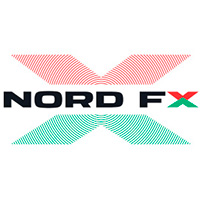And so you are here. You have opened your trading account (maybe a demo one) and you are ready for some action… or so you want to believe.
But before you move forward with placing nonsense market orders and losing a few bucks to “feel the emotion”, let’s take a moment for the sake of education and learn something about Forex charts. Did you know there are three types of charts? Well, now you do.
Line Chart
I mean… it does not get more simple than it. A line that shows how a pair moves in a certain period of time. Not rocket science, I get it. But it is out there and at least knowing it is called “line chart” won’t hurt.
And by the way, if you are trying to really simplify your working desk, using line charts can be a good place to start. Long-term traders who are not so worried about opening and closing prices for an specific timeframe can take line charts on.
Bar Chart
The bar chart is one more step to greatness. If you are not a “I like colors” kind of person, then this might be the right option for you. Simple, but with enough information to trade.
The bar serves to identify four things in a precise moment: the opening and closing prices, as well as the highs and lows. That is why this type of chart is also known as OHLC charts.
- Open: The horizontal line on the left displays the opening price
- High: The top of the vertical line displays the highest price
- Low: The bottom of the vertical line displays the lowest price
- Close: The horizontal line on the right displays the closing price
Candlestick Chart
Candlestick charts include with the same information as bar charts, but display it in a more graphic way, which is usually better for traders looking for intuitive tools.
Above and below the candle (real body), you can find the upper and lower shadows, which show the highest and lowest points during that period of time.
The real body is determined by the opening and closing price. If the closing price ends up being above the opening price, the body turns green. If not, the body goes red.
 The firm grants access to over 450 trading instruments across six major asset classes, including forex, commodities, metals, indices, shares, and futures, catering to diverse trading preferences.
The firm grants access to over 450 trading instruments across six major asset classes, including forex, commodities, metals, indices, shares, and futures, catering to diverse trading preferences. Trump has declared that the United States could become the global capital of the crypto industry. To achieve this, he proposes reducing regulatory pressures.
Trump has declared that the United States could become the global capital of the crypto industry. To achieve this, he proposes reducing regulatory pressures. Forex trading is a captivating endeavor, promising both active and passive income streams. Yet, mastering forex is a continuous journey that transcends expertise levels, be it a novice or a seasoned trader...
Forex trading is a captivating endeavor, promising both active and passive income streams. Yet, mastering forex is a continuous journey that transcends expertise levels, be it a novice or a seasoned trader... In a resounding victory, NordFX, a prominent brokerage firm, has been crowned the "Best News & Analysis Provider" of 2023...
In a resounding victory, NordFX, a prominent brokerage firm, has been crowned the "Best News & Analysis Provider" of 2023... Errante, the premier online broker, is dedicated to delivering top-tier services and forging long-lasting, trust-based relationships with our clients. Our mission is to enhance your online trading journey...
Errante, the premier online broker, is dedicated to delivering top-tier services and forging long-lasting, trust-based relationships with our clients. Our mission is to enhance your online trading journey...